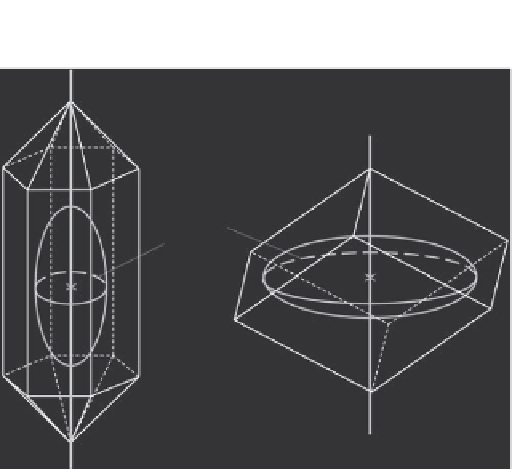Chemistry Reference
In-Depth Information
optic axis
ε
optic axis
ε
circular
section
ω
U+
U−
Figure 2.3
Indicatrix: uniaxial minerals.
In the hexagonal, trigonal, tetragonal systems, the indicatrix is an ellipsoid
of revolution: there is only one optic axis which is the axis of revolution, the
mineral is called
uniaxial
. A section perpendicular to the optic axis (axis of
revolution) is optically isotropic. Index along the optic axis is called
ε
, index
along the circular section is called
ω
.
, the indicatrix is an elongated (prolate) ellipsoid («cigar-shaped
ellipoid»), the mineral is called
positive uniaxial
(for example: quartz).
If
If
ε
>
ω
, the indicatrix is an flattened (oblate) ellipsoid («pancake- or
disk-shaped ellipsoid»), the mineral is called
negative uniaxial
(for example:
calcite, tourmaline).
ε
<
ω
2.2
THE PETROGRAPHIC MICROSCOPE
Basically, a polarizing microscope in transmit light includes:
an
illuminator
, source of a parallel beam of white non-polarized (circu-
lar polarized) light;
the
lower polarizer
(or Nicol) that transforms the incident beam into
plane polarized light. This first polarizer may be rotated. The cross hairs
of the reticle (at right angle) materialize the polarization plane of the
polarizers. Depending on the construction of the microscope, polariza-
tion plane of the first polarizer may be E-W or N-S;





























